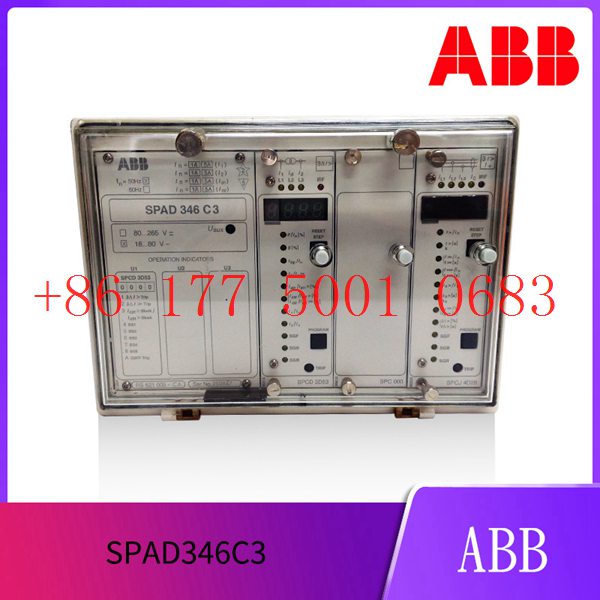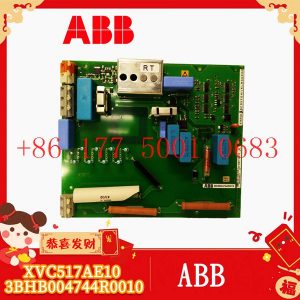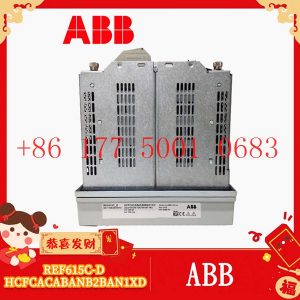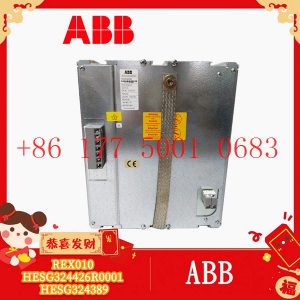Description
One of the elements of flexible automation is human-machine interaction and human-machine integration. After pioneering the
launch of the YuMi two-arm robot, ABB has launched a new YuMi single-arm robot this time. The new robot has a 500-gram payload and,
due to its compactness, can be easily integrated into existing assembly lines, thereby increasing productivity; it also features guided programming
that eliminates the need for special training for operators. ABB combines it with the YuMi dual-arm robot and Safe Move2
software to provide customers with a new way to improve flexibility, allowing humans and robots to collaborate safely and efficiently in the same space.
(YuMi single-arm robot)
The new OmniCore controller series is one of ABB”s digital product representatives on display this time. The range is designed to unleash the full potential of connected robots. OmniCore has built-in ABB Ability connected services to help customers avoid costly downtime and recover quickly from incidents.
“The manufacturing model is changing to small batches and multiple varieties.”
At the International Robotics and Automation Technology Trade Fair (AUTOMA TI CA) in Munich, Germany, in June this year ,
ABB showcased its groundbreaking new product line. Just a few months later, ABB added two new robots to this rich product line
: one is the IRB 1100, ABB’s lightest six-axis robot to date, and the other is the IRB 910INV flip-up SCARA robot. Both new products have something in common: they are small, flexible in installation, and can be easily integrated i
nto limited spaces. Their high precision and fast pace can greatly improve the production efficiency of small parts assembly units. This time, they all made an appearance at the Industrial Expo.
“The manufacturing model is shifting towards low-volume, high-variety products, and one of the challenges is the growing need for customized automation solutions. We find that within the same industry,
or within the same company, and sometimes even within the same factory,
a variety of applications More and more unique. Our new product lines are designed to provide customers with flexibility to help them stay
ahead of continuous changes.” Niside said that the launch of ABB”s new products is a positive response based on a full understanding of customer needs.
Three major opportunities for ABB Robotics in China
“ABB has been developing in China for 111 years.” Li Gang, President of ABB China Robotics and Motion Control Division and President of
ABB China Robotics Business Unit, said that promoting localization of the entire value chain is the key to ABB achieving steady business growth.
Taking ABB Robots as an example, in terms of research and development, it has a global R&D center for small robots in China; in terms of
manufacturing, it produces more than 95% of robot product models; in terms of sales, it adopts a direct and indirect dual channel strategy;
in terms of system integration, local procurement exceeds 85% %, with global centers for body-in-white, powertrain, assembly and testing businesses, and is a pioneer and promoter of many industries and applications; in terms of services, in addition to providing 24 hours*7 days
of uninterrupted services, it also provides services from scratch A complete service product portfolio from parts, emergency services, on-site services to system services, and also has the largest bonded parts warehouse in the industry. “In China, for China and the world” has been integrated into ABB”s every word and deed.
As mentioned above, China”s manufacturing industry is facing transformation and upgrading. Whether manufacturing companies actively
seek change or are forced to upgrade, “machine substitution” is a shortcut for upgrading that is easy to learn, easy to use, and has quick results.
Among many sub-sectors, ABB is optimistic about the consumer electronics, automotive and logistics industries.
The industries with the fastest growing robot applications in 2017 were the automotive and electronics industries. The two account for almost two-thirds of the market.
In Li Gang’s interpretation, consumer electronics manufacturing has become a “perfect storm” for robotic automation. A high degree of mass
customization and shortening product life cycles are challenges that the consumer electronics
assembly field is facing. In addition, the shortage of skilled workers, high turnover rates, and strict product quality requirements have made ”
machine substitution” a natural expansion. With the coverage of industry applications, the scalability and flexibility of ABB robotics technology allow companies to use it with confidence.
Driven by the development of new energy vehicles, the automobile industry has gained new vitality. In the electric vehicle battery manufacturing
process, key processes such as thermal management, structural fixation, and sealing of the automotive battery system require the use of glue materials.
ABB can provide flexible, precise, durable, and fast integrated robot glue coating solutions.
For the automotive industry, ABB has launched the world”s first connected, sensor-equipped ABB Ability spray atomizer, which can optimize spray quality through real-time intelligent diagnosis. This turnkey solution can increase paint application rates by 10%, reduce paint loss during color changes by 75%, and reduce compressed air consumption by 20%.
Excitation system ABB module DSRF182AK02 3BSE014078R1
Excitation system ABB module DSRF182
Excitation system ABB module DSRF180M
Excitation system ABB module DSRF180A 57310255-AV
Excitation system ABB module DSRF180A
Excitation system ABB module DSRF160M
Excitation system ABB module DSRF160
Excitation system ABB module DSRF154M
Excitation system ABB module DSRF150
Excitation system ABB module DSRC113
Excitation system ABB module DSRB310
Excitation system ABB module DSRB110
Excitation system ABB module DSQT239
Excitation system ABB module DSQS118
Excitation system ABB module DSQC697
Excitation system ABB module DSQC697
Excitation system ABB module DSQC679 3HAC028357-001
Excitation system ABB module DSQC679 3HAC028357-001
Excitation system ABB module DSQC679
Excitation system ABB module DSQC679
Excitation system ABB module DSQC668 3HAC029157-001
Excitation system ABB module DSQC668
Excitation system ABB module DSQC664
Excitation system ABB module DSQC663 3HAC0298180881
Excitation system ABB module DSQC663 3HAC029818-001/14
Excitation system ABB module DSQC663 3HAC029818-001
Excitation system ABB module DSQC663
Excitation system ABB module DSQC661 3HAC026253-001
Excitation system ABB module DSQC661
Excitation system ABB module DSQC659
Excitation system ABB module DSQC658
Excitation system ABB module DSQC658
Excitation system ABB module DSQC653
Excitation system ABB module DSQC652 3HNA025917-001
Excitation system ABB module DSQC652
Excitation system ABB module DSQC651
Excitation system ABB module DSQC643 3HAC024488-001
Excitation system ABB module DSQC639 3HAC025097-001
Excitation system ABB module DSQC639
Excitation system ABB module DSQC639
Excitation system ABB module DSQC633
Excitation system ABB module DSQC627 3HAC020466-001
Excitation system ABB module DSQC627 3HAC020466-001
Excitation system ABB module DSQC627
Excitation system ABB module DSQC626A
Excitation system ABB module DSQC626
Excitation system ABB module DSQC626
Excitation system ABB module DSQC611
Excitation system ABB module DSQC611
Excitation system ABB module DSQC609
Excitation system ABB module DSQC609
Excitation system ABB module DSQC608
Excitation system ABB module DSQC608
Excitation system ABB module DSQC604
Excitation system ABB module DSQC604
Excitation system ABB module DSQC603
Excitation system ABB module DSQC602
Excitation system ABB module DSQC602
Excitation system ABB module DSQC601 3HAC12815-1
Excitation system ABB module DSQC601
Excitation system ABB module DSQC572
Excitation system ABB module DSQC562 3HAC16014-1/05
Excitation system ABB module DSQC546A
Excitation system ABB module DSQC545A 3HAB8101-19/07A









Reviews
There are no reviews yet.